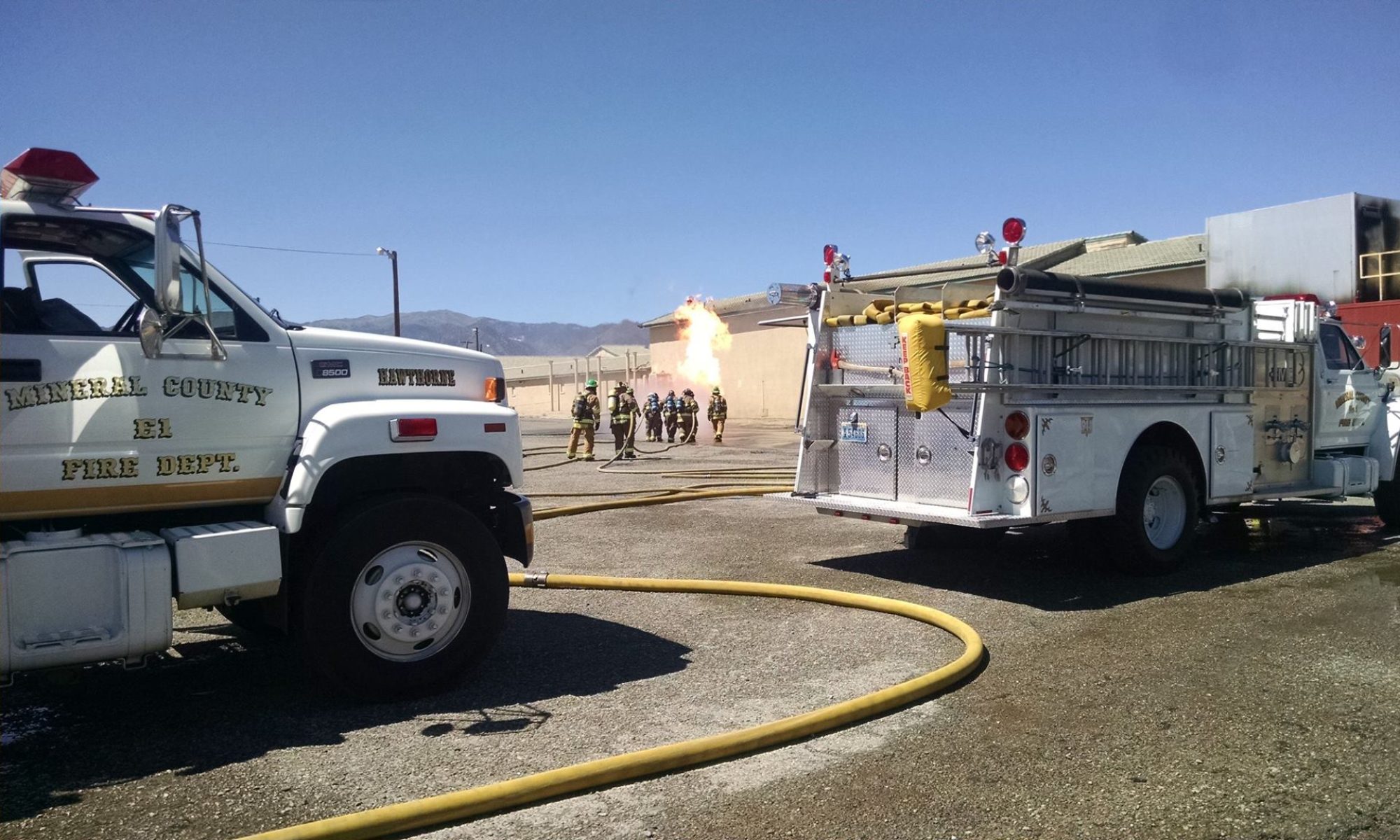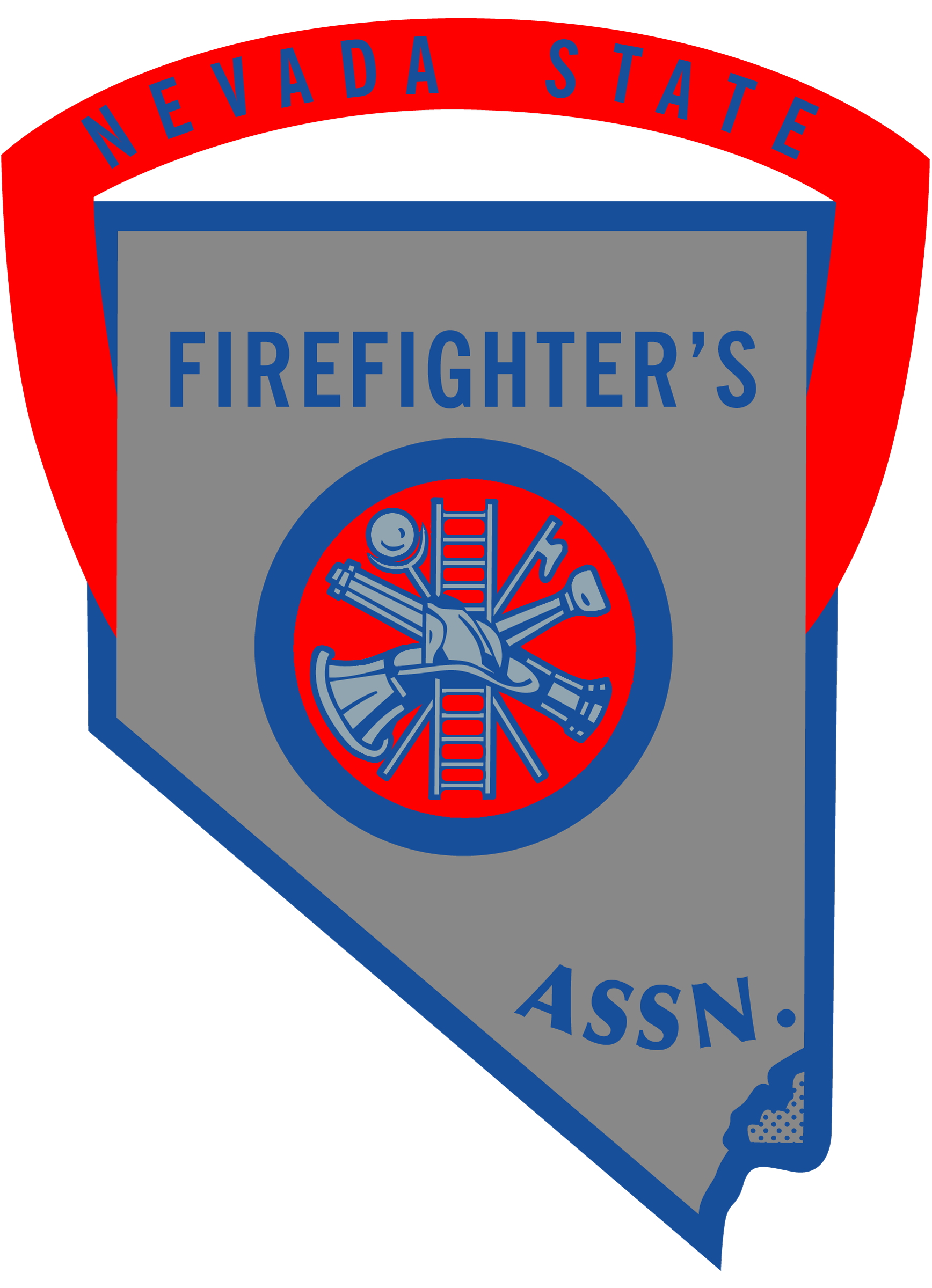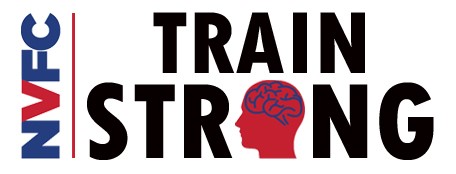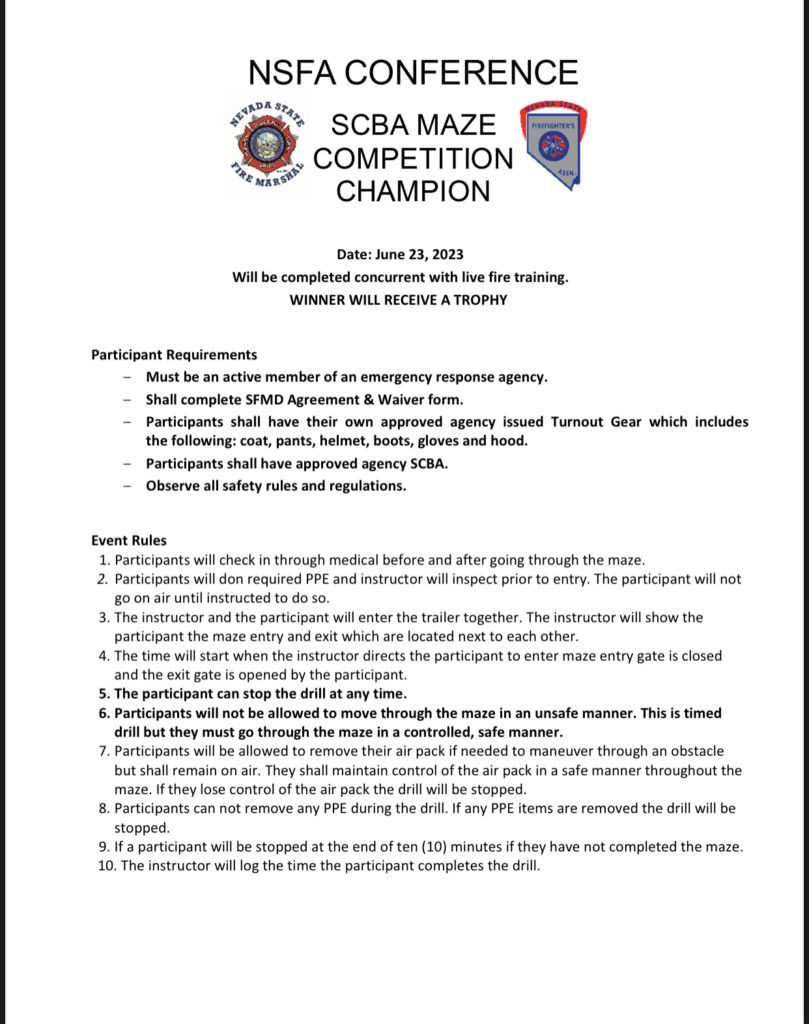Disclaimer:
We have received several requests for a 30,000-foot view of what would be required for an Agency Having Jurisdiction (AHJ) to comply with the proposed 1910.156 standard. While this list is not comprehensive, it is our best understanding of what would be required under the standard if adopted, as written, today. Please pay special attention to the NFPA standards referenced, as they contain over 1,500 “shalls” and “musts” that would be required under this law. While the standard is very detailed, it is also very vague on exactly what would meet the standards. These details would be decided by individual inspectors and court cases moving forward. This review is not a legal opinion in any way, shape, or form, or reflect the opinion of any business or organization. This is strictly the review of a few folks that have spent hundreds of hours pouring through the proposed standard since it was announced in December 2023.
Summary
On February 5th, 2024, the Federal Occupational Safety and Health Administration published a proposed rule that would update the 29 CFR 1910.156 “Fire Brigade” standard that was first published in 1980. This proposed rule would replace the existing rule and expand the scope of it from the original small-scoped fire responder rule to now set board standards that apply not just to industrial firefighters but would now also apply to employees engaged in fire service activities, emergency medical services, and specialized rescue services.
Who would it apply to?
- All private services would be subject to this rule as well as any public or governmental entity if you are in a jurisdiction where OSHA is applied to you (OSHA program states and municipalities).
- “Employees” of any agency engaged in the above activities. While many volunteers are not viewed as employees by states and the federal government, many states do consider volunteers to be employees. Also, volunteers that receive pension plans or other substantial renumeration may qualify as employees under the rule. Refer to your jurisdiction or counsel to learn whether your volunteers would be considered employees.
- Examples of agencies that would need to comply that did not under the old rule include: Private EMS services, Law enforcement rescue teams such as SAR, and water rescue teams.
What does it the proposed rule require?
Here is a very general overview, refer to the proposed rule for specifics:
- Establish a comprehensive Emergency Response Plan (ERP) that provides protections for responders who are designated to work at incidents. It shall include, but not be limited to:
- Team members responsibilities and participation based on role and capability
- Comprehensive risk management plans
- Medical and physical requirements
- Training
- Facility preparedness
- Vehicle preparedness and operation
- Pre-incident planning
- Incident management system use
- Emergency incident operations
- Standard operating procedures
- Post-incident analysis
- Program evaluation
- Updated copies of all written policies and procedures
- The ERP must also include a comprehensive community vulnerability assessment for the agency’s response area identifying:
- Hazards within the jurisdiction
- Places, structures, facilities, and other locations requiring regular pre-incident planning
- An ongoing listing of locations that are vacant and a method of identifying those that are unsafe.
- A list of services the community may need, which will and will not be provided by the agency, and where those services will come from if not provided by the agency.
- The ERP must identify the necessary resources and manpower to provide it’s intended response services to its respective area of responsibility.
- In the ERP, the tiers and types of responders and their expected roles must be identified. (for example, interior structural firefighter, exterior only operations firefighters, fire police, vehicle operators, technical specialists, EMTs, EMRs, Paramedics)
- Team members must be permitted to participate in the development of the ERP.
- Medical Requirements:
- Establish a medical program that is compliant with NFPA 1582 (this is for every agency to comply, not just firefighters).
- Comprehensive physical exams appropriate for all roles and tiers at least every 2 years for every member who may be exposed to combustion products 15 or more times a year.
- Appoint a properly trained and qualified medical officer or manager to oversee your program and maintain confidential records.
- Provide for the costs of exams, tests, and time lost.
- Establish guidelines that set timelines and conditions for requirements of return-to-duty evaluation after an illness or injury.
- Perform medical monitoring of exposures to all hazardous substances and chemicals, biological hazards, and combustion products.
- Establish a behavioral health program that includes ongoing monitoring, counseling, post-incident care, and referral and crisis care.
- Establish policy defining fitness for duty and how member readiness is monitored.
- Establish an ongoing health and fitness program:
- Appoint a Health and Fitness Officer or Manager who is trained and qualified to oversee member health and fitness.
- Provide an opportunity for members to exercise while on duty.
- Execute a health and fitness assessment of each member at least every 3 years.
- Provide education and counseling regarding health promotion for all responders.
- Training:
- Provide initial training, on-going training, refresher training, and professional development to all members based on their expected job tasks for their levels and tiers.
- Ensure all instructor/trainers are qualified and meet knowledge, skill, and ability expectations.
- Provide training in a language and at a literacy level that will allow responders to understand and that it allows time for questions and interactive learning.
- Provide training on all policies and procedure to include the risk management plans, health and wellness program, Incident Management System, all aspects of PPE, fire extinguisher use.
- Every emergency responder must be trained how to act in dangerous situations and events such as orderly and rapid evacuations or equipment failure.
- Each team member is at least HAZWOPER First Responder Awareness level trained.
- Each team member and responder is CPR and AED trained.
- Facility and industrial responders trained to comply with NFPA 1081-2018.
- Interior structural firefighters meet or exceed NFPA 1001-2019 and NFPA 1407-2020 (Rapid intervention team standard).
- Each vehicle operator must be at least trained in accordance with requirements of NFPA 1002-2017.
- At a minimum, every manager/supervisor/crew leader/officer must be trained to the appropriate level set forth in NFPA 1021-2020.
- Specialized training minimums:
- Wildland firefighting – NFPA 1140-2022.
- Technical rescue – NFPA 1006-2021.
- Marine environment – NFPA 1005-2019.
- EMS providers shall be trained and certified to state or jurisdictional minimum requirements based of level of responder.
- Team members and responders are required to demonstrate proficiency of knowledge and skills annually of the JPRs for their respective tier and level.
- Facilities Preparedness:
- Provide facilities for decontamination, disinfection, cleaning, and storage of PPE.
- Fire poles and their vertical openings must comply with safety protections.
- All fire protection systems must be installed, tested, and maintained in accordance with manufacturer’s requirements.
- Hard wired smoke and CO detection systems are mandatory.
- Sprinklers are mandatory in new construction.
- Vehicle exhaust exposure prevention measures are required.
- No contaminated PPE in sleeping and living areas.
- Must ensure standpipe and hose fitting compatibility with responding fire departments.
- Equipment and PPE
- Provide equipment and PPE to team members to train and perform work at no cost.
- Maintain all equipment and perform periodic testing. Also establish a procedure for reporting defective gear and equipment and removing it from service.
- New PPE must comply with the NFPA standard associated with its purpose (example: structural firefighting gear meets NFPA 1971).
- Personal items permitted for use must also comply with all above.
- PPE and equipment must have gross decontamination before leaving scenes.
- No contaminated gear or PPE in passenger compartments of vehicles.
- Vehicle Preparedness
- Process in place to assure vehicle is inspected, maintained, and repaired.
- Process in place so every member knows when and how a vehicle is to be taken out of service.
- Every riding position is a seat and has appropriate restraints.
- Fire apparatus is inspected and maintained in accordance with applicable NFPA standards.
- Vehicle Operation
- No vehicles will move until all occupants are seated and properly restrained and shall remain so any time the vehicle is in motion.
- Team members providing care to a patient must be restrained any time doing so will not directly impact the ability to deliver care.
- Harnesses provided and used when engaged in pump-and-roll operations, loading hose or other activities that require work while the vehicle is in motion.
- Policies required for team member use of vehicle not under direct control of the agency such as POVs for response to facilities or scenes.
- Pre-Incident plans must be completed on facilities determine to require them in the ERP. These plans should address site contacts, resources available and needs for additional resources, hazards, and unique challenges. These plans must be made available to all team members and reviewed annually.
- Agencies shall utilize an Incident Management System (IMS) and encouraged to be standardized with the current NIMS framework.
- Emergency Incident Operations
- Every incident utilizes an IMS and has an assigned Incident Commander or Unified Command.
- Every incident has safety addressed either through the role of the IC or UC (smaller incidents) or through designation of an Incident Safety Officer.
- Crews must be rotated periodically in extended or complex incidents.
- Every emergency incident has established control zones by IC that are clearly identified and marked in a conspicuous manner whenever possible. The locations of the control zones must be shared with every team member or responder before they are assigned to any control zone.
- Minimum of 4 adequately trained members respond before entry into an IDLH. Two-in, two-out followed unless imminent danger to life exists. (Immediate rescue)
- Positive pressure SCBA or supplied air respirators with a 5-minute rescue bottle only in IDLHs.
- A personnel accountability system must be utilized.
- Rapid Intervention Crew (RIC) must be established as soon as feasible at structural fires when crews are operating in IDLH.
- An adequate communication plan and system must be established and used during incident operations.
- Establish Rehab with medical monitoring as well as traffic control procedures when needed.
- When using skilled support workers (SSW) (tow operators, equipment operators, industry reps) agency must ensure they are properly protected, using appropriate PPE, and are properly escorted when operating at an incident.
- Every response agency must establish SOPs addressing all areas of operation and readiness. Specific areas include: PPE wear, use, cleaning, inspection and repair; Post-incident decontamination and contamination prevention of team members including gross decontamination, showering and hygiene; radio communications procedures; Mayday procedures; operations at vacant dwellings; medical monitoring and rehab; crime scenes; traffic incident operations.
- Post-incident analysis must be performed on any significant event such as a large-scale event, a near-miss event, any team member, responder or SSW injury or illness requiring treatment or fatality.
- The agency performance to meet the ERP must be reviewed annually and any discrepancies must be addressed.
What Standards are Included By Reference?
The following standards have been included by reference and any section therein with a ‘shall’ or ‘must’ statement are to be complied with:
- NFPA 1001, Standard for Structural Fire Fighter Professional Qualifications, 2019 ed.
- NFPA 1002, Standard for Fire Apparatus Driver/Operator Professional Qualifications, 2017 ed.
- NFPA 1005, Standard for Professional Qualifications for Marine Fire Fighting for Land-Based Fire Fighters, 2019 ed.
- NFPA 1006, Standard for Technical Rescue Personnel Professional Qualifications, 2021 ed.
- NFPA 1021, Standard for Fire Officer Professional Qualifications, 2020 ed.
- NFPA 1081, Standard for Facility Fire Brigade Member Professional Qualifications, 2018 ed.
- NFPA 1140, Standard for Wildland Fire Protection, 2022 ed.
- NFPA 1407, Standard for Training Fire Service Rapid Intervention Crews, 2020 ed.
- NFPA 1582, Standard on Comprehensive Occupational Medical Program for Fire Departments, 2022 ed.
- NFPA 1910, Standard for the Inspection, Maintenance, Refurbishment, Testing, and Retirement of In-Service Emergency Vehicles and Marine Firefighting Vessels, 2024 ed.
- NFPA 1951, Standard on Protective Ensembles for Technical Rescue Incidents, 2020 ed.
- NFPA 1952, Standard on Surface Water Operations Protective Clothing and Equipment, 2021 ed.
- NFPA 1953, Standard on Protective Ensembles for Contaminated Water Diving, 2021 ed.
- NFPA 1971, Standard on Protective Ensembles for Structural Fire Fighting and Proximity Fire Fighting, 2018 ed.
- NFPA 1977, Standard on Protective Clothing and Equipment for Wildland Fire Fighting and Urban Interface Fire Fighting, 2022 ed.
- NFPA 1981, Standard on Open-Circuit Self-Contained Breathing Apparatus (SCBA) for Emergency Services, 2019 ed.
- NFPA 1982, Standard on Personal Alert Safety Systems (PASS), 2018 ed.
- NFPA 1984, Standards on Respirators for Wildland Fire-Fighting Operations and Wildland Urban Interface Operations, 2022 ed.
- NFPA 1986, Standard on Respiratory Protection Equipment for Tactical and Technical Operations, 2023 ed.
- NFPA 1987, Standard on Combination Unit Respirator Systems for Tactical and Technical Operations, 2023 ed.
- NFPA 1990, Standard for Protective Ensembles for Hazardous Materials and CBRN Operations, 2022 ed.
- NFPA 1999, Standard on Protective Clothing and Ensembles for Emergency Medical Operations, 2018 ed.
- ANSI/ISEA 207, American National Standard for High-Visibility Public Safety Vests, 2011 ed.
Questions and Comments?
Woodward, Chief of Legislative & Regulatory Affairs, [email protected], (202)-887-5700 x134
Dave Denniston, NVFC OSHA Task Force Chair, [email protected], (607) 423-1636



